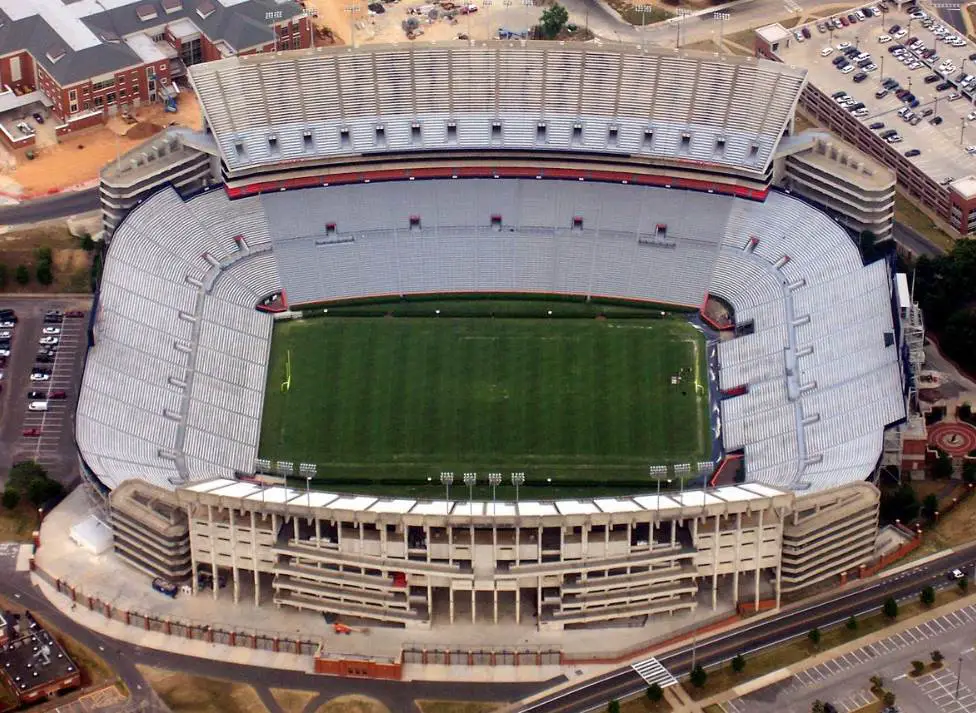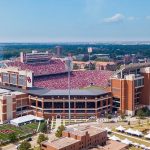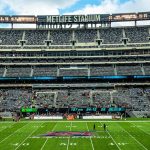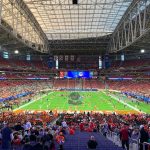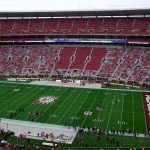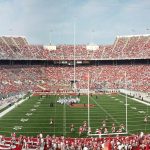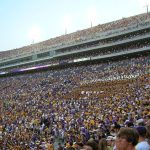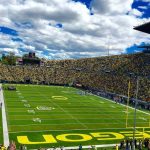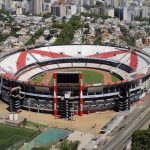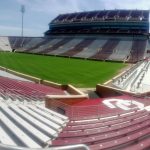The campus of a university in the U.S. state of Alabama features a stadium that can hold more people than live in the city.
This magnificent sports venue in Alabama is one of the biggest stadiums in the US but is remarkable not the biggest stadium in the state.
Let’s take a closer look at some of the most interesting facts about the Jordan–Hare Stadium, one of the largest stadiums in the world.
1. It’s located on the campus of the Auburn University
Jordan–Hare Stadium is a magnificent football stadium located on the campus of Auburn University in Lee County, Alabama.
Auburn is the largest city in the eastern part of the state with a population of nearly 77,000 inhabitants. The metropolitan area of the city is home to nearly 160,000 inhabitants.
Auburn university was established way back in 1856 and currently has over 24,600 undergraduate students, over 30,000 enrollments, and over 1,300 faculty members.
The campus of the second-largest university is located in the southwestern part of the city and the huge stadium dominates the place.
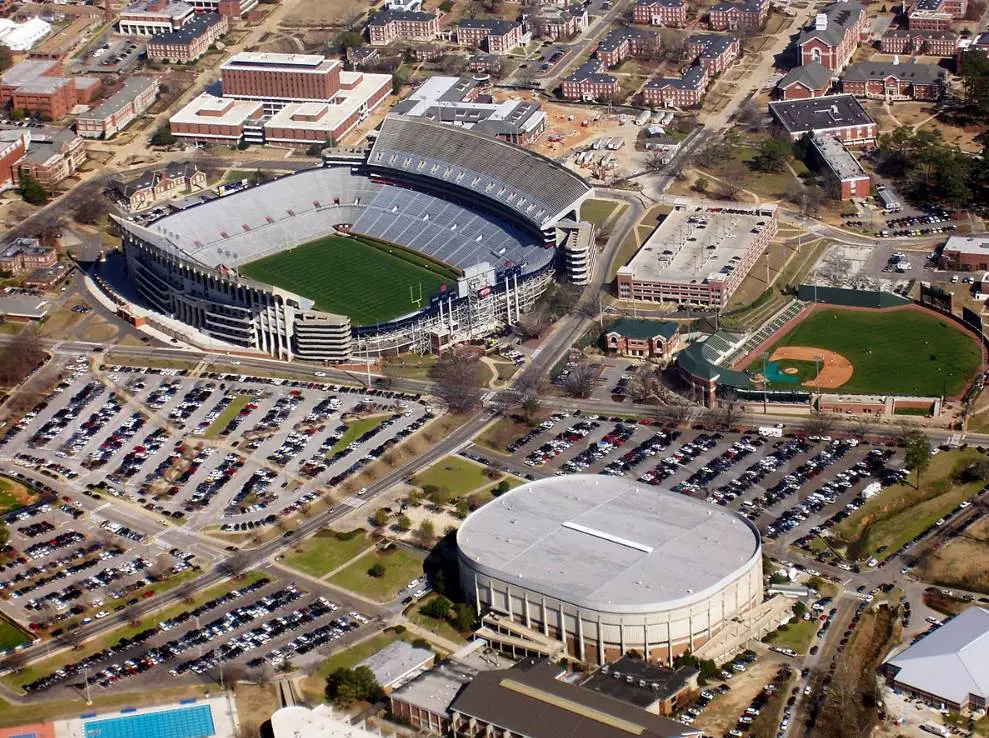
2. It has been the home of the Auburn Tigers football team since 1939
The stadium is the home of the Auburn Tigers football team and has been since it was completed in 1939. They were inaugural members of the Southeastern Conference in 1932.
They compete in Division I of the National Collegiate Athletic Association (NCAA) and are part of the Southeastern Conference (SEC).
The football team started competing in the year 1892 and has since won 2 national championships in 1957 and 2010.
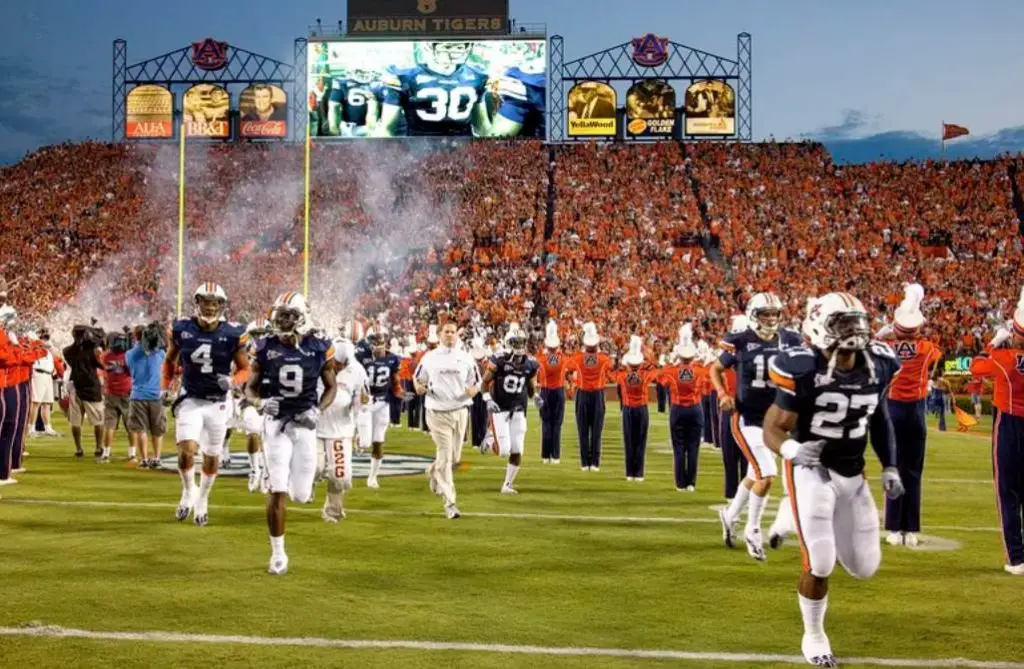
3. The stadium replaced an older multi-purpose venue that dates back to 1911
Before the Tigers moved to their new home in 1939, they were forced to play their home games at Drake Field, a stadium that didn’t have permanent stands.
Bleachers were installed occasionally which allowed approximately 700 people to be seated to watch the games on the campus of Auburn University.
Drake Field was constructed in 1911 and served as a multi-purpose venue that served as a football, baseball, and track stadium.
The capacity gradually increased over the years and by the time the Jordan-Hare Stadium was completed, about 7,550 people could be seated at Drake Field.
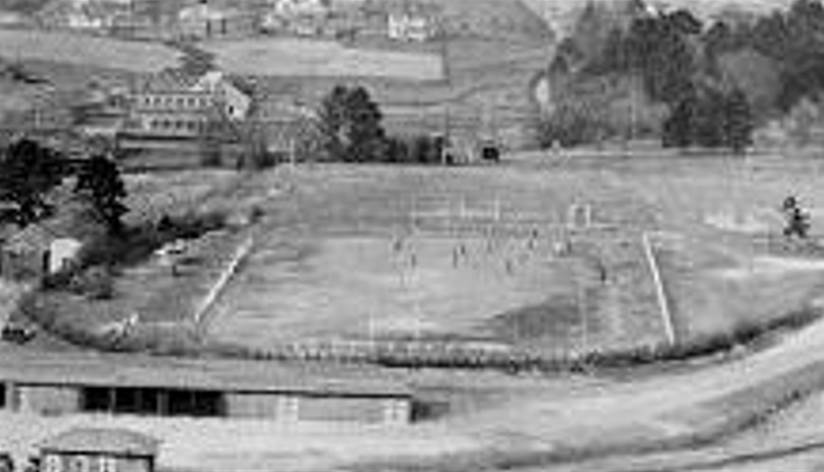
4. The first expansion phase in 1949 also resulted in the first name change
The stadium that is known today as the Jordan-Hare Stadium was referred to as the “Auburn Stadium” when it was completed in 1939.
It held this name for about a decade until the first expansion phase was completed in 1949. After the project was completed it was named “Cliff Hare Stadium.”
Cliff Hare (1869-1948) was a member of the first Tigers football team and later became the dean of the School of Chemistry. He was also the president of the Southern Conference before it became the Southeastern Conference.
Upon completion, about half the size of the lower west grandstand was the only permanent stand. It could seat 7,500 people and it was adjoined by temporary bleachers.
The expansion project in 1949 added a permanent stand to the east side and the capacity was increased to 21,500 seats.
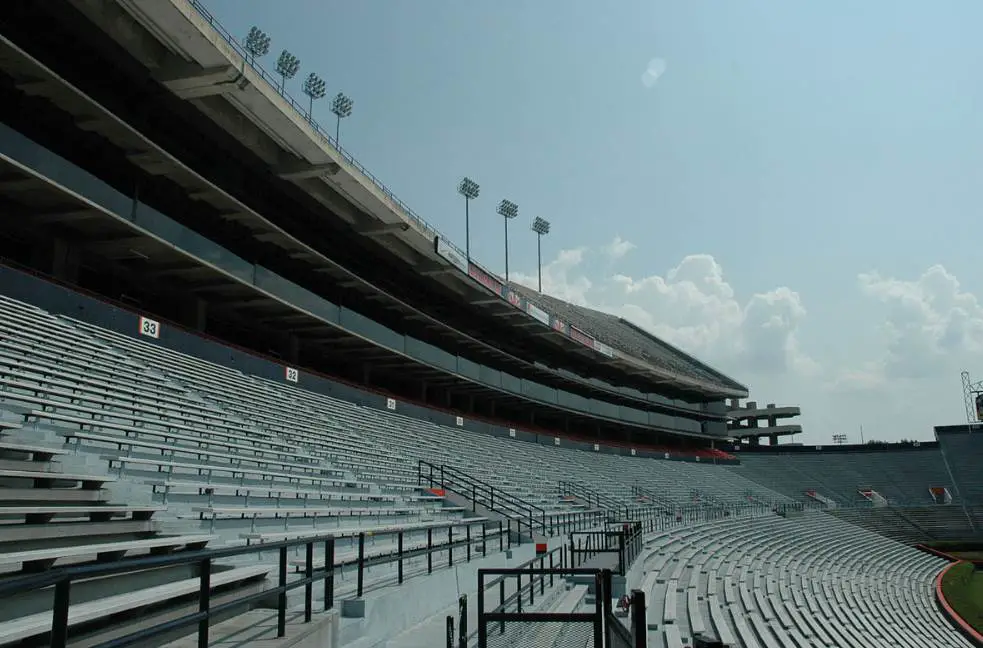
5. It took many decades before all home games were played at the stadium
Even though the Auburn Tigers had a stadium featuring permanent stands, the capacity was still way too little to accommodate all spectators.
One of the most remarkable facts about Jordan-Hare Stadium is that it took many decades before the major games were played here.
Games against Tennessee and Georgia Tech were played at Legion Field in Birmingham, Alabama, until the early 1970s. Some games were even played at Memorial Stadium in Columbus, Georgia.
The biggest game of the year is called the Iron Bowl and is a game in which the Tigers face The University of Alabama Crimson Tide.
It took many more years before Alabama first came to The plains and the first Iron Bowl was played in Auburn on December 2, 1989.
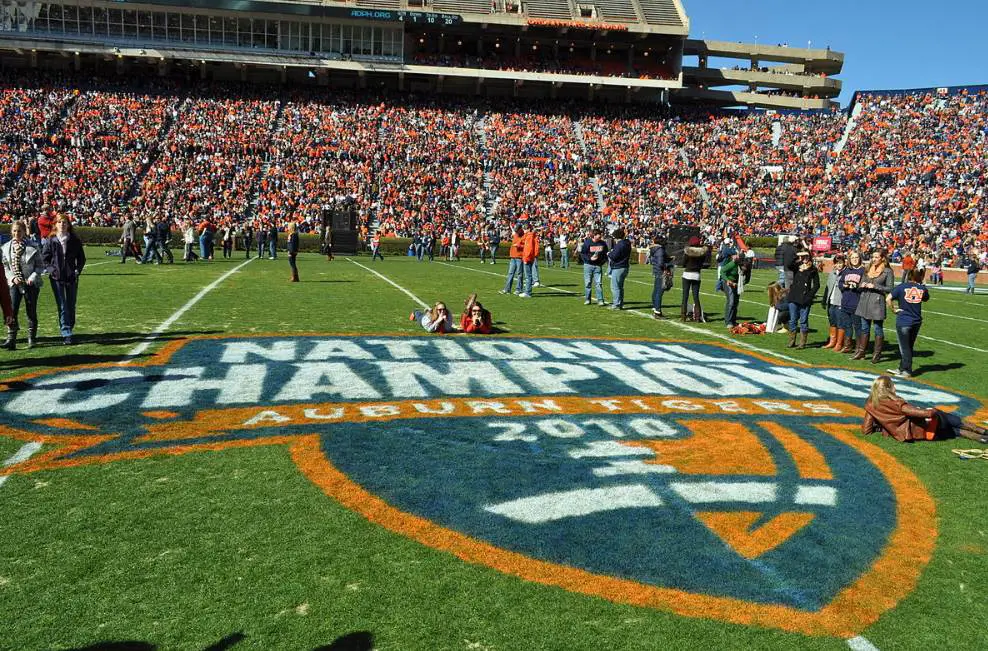
6. The stadium was renamed once more to its current name in 1973
The Cliff Hare Stadium was renamed Jordan-Hare Stadium in 1973. This was to commemorate Ralph “Shug” Jordan (1910-1980), a former football player.
He served as the head coach of the Tigers between 1951 to 1975. This means that he was still the head coach when the stadium was named in his honor. It was the first stadium in the country to be named for an active coach.
He played a major role in the development of the stadium as the capacity tripled during his 25-year tenure. By the time he retired in 1975, the capacity of the stadium was 61,261 seats.
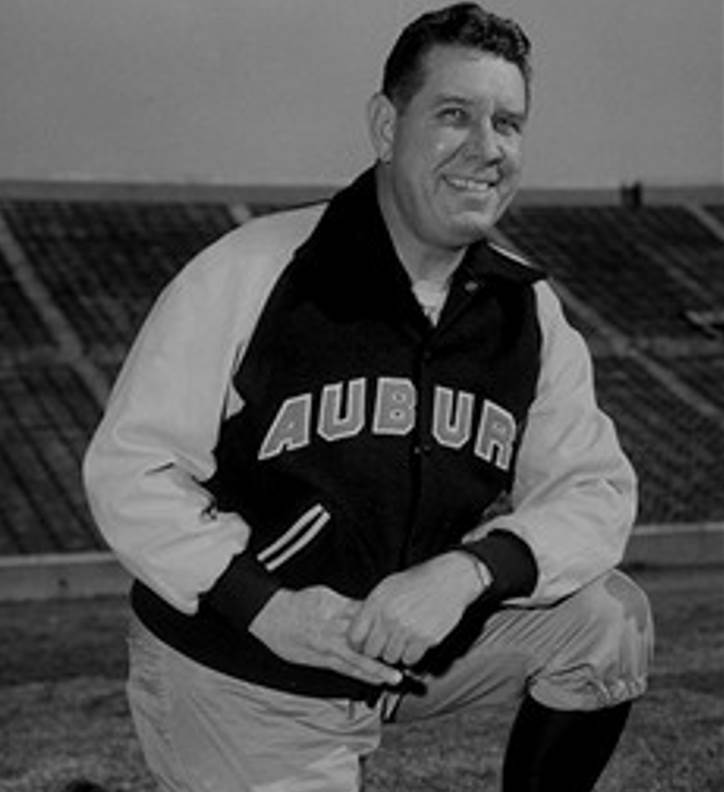
7. The Jordan-Hare Stadium was the biggest in Alabama between 1987 and 2006
Some of the most significant expansions of the stadium happened during the 1980s. The west upper deck was added in 1980 and the east upper deck followed in 1987.
With the addition of the east upper deck, the stadium’s capacity increased to 85,214 seats which is nearly the number the stadium can hold today (87,451).
It became the biggest stadium in Alabama until it was surpassed in 2006 by the Bryant–Denny Stadium in Tuscaloosa, a venue that can seat 100,077 people today.

8. The final expansion phase of the stadium was completed in 2004
The final expansion phase of the stadium was completed in 2004. The upper east deck was expanded on both sides, luxury suites were constructed, and more seats were added to the stands.
The capacity of the stadium grew to 87,451 which makes Jordan-Hare Stadium the 10th largest stadium in the NCAA.
It’s also the 13th largest stadium in the United States and the 19th-largest in the entire world.
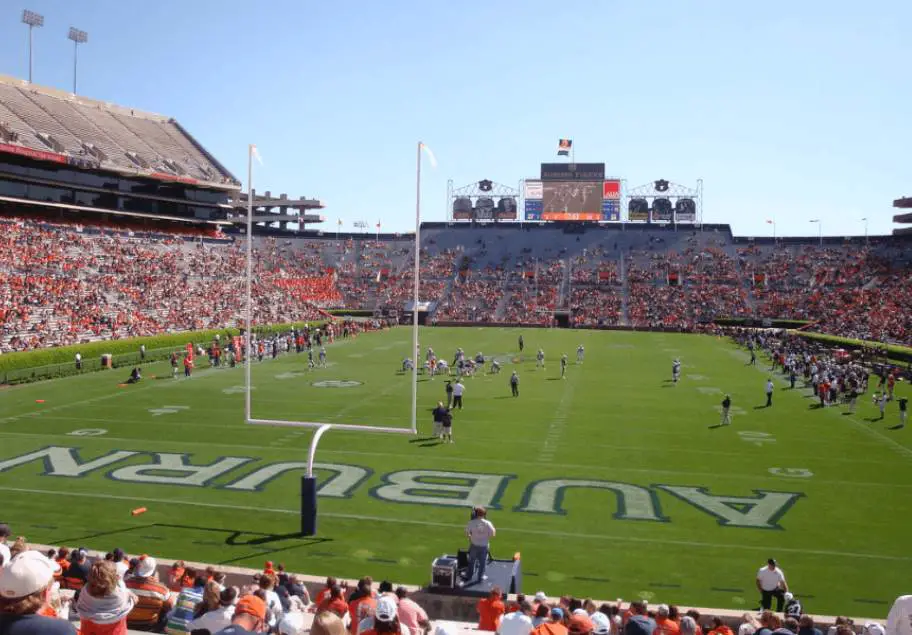
9. The stadium features the largest video board in college football
Just because the stadium didn’t expand anymore didn’t mean that there haven’t been new features added to improve the venue.
Before the start of the 2007 season, an HD Daktronics LED video display was added for $2.9 million. This had dimensions of 9.1 x 23 meters (30 x 74 feet).
This was replaced by an even bigger LED video board in 2015 which has dimensions of 17.37 x 57.91 meters (57 x 190 feet).
This huge scoreboard covers an area of 1,006 square meters (10,830 square feet) which makes it the largest of its kind in college football.
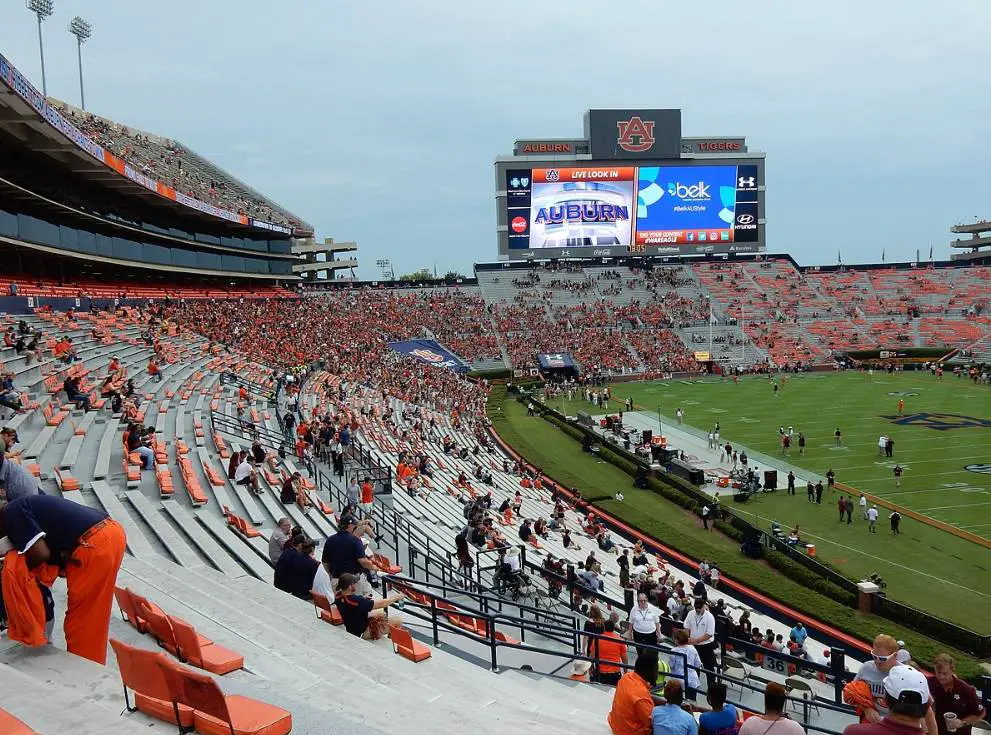
10. The final addition to the stadium was added in 2017 and cost $28 million to build
The north endzone of Jordan-Hare Stadium might have looked completely different if a $145 million project had been approved back in 2015.
It would have transformed this section of the stadium as premium club seating and lounges were constructed to provide every comfort imaginable for fans.
The plan was shelved and instead, a $28 million project was completed which added a gameday support facility in the southwest corner of the stadium.
This project, which was completed in 2017, was the final addition to one of the greatest sports venues in the United States.
